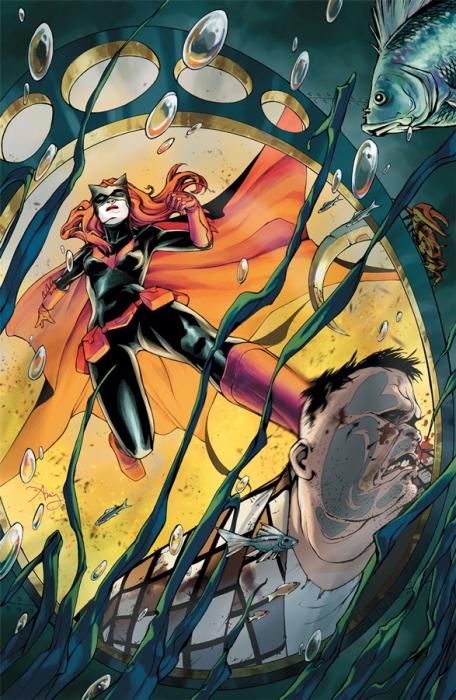"Batwoman" #7 is the midway point in the title's second story arc written by J. H. Williams III and W. Hayden Blackman. Yes, that is the same J. H. Williams III whose beautiful artwork compels so many to buy the books that he draws.
Unfortunately, Williams' writing (with cohort Blackman) isn't quite as compelling as his artwork and this issue is proof. The story bounces around a little too much. From the start of the story in this comic, we fall back three weeks, two months, one week, peeking in on quick scenes that are barely complete enough to be called scenes, but just long enough to provide pieces of a larger, slow-moving narrative. Those segments come across as trailers, snippets or brief character studies, but don't really offer much to invest in.
Among the characters we're treated to in these vignettes are: Bloody Mary, one of the henchpeople of secretive mystical cult of Medusa; Falchion, the leader of Medusa; a horribly mutated Killer Croc; and Maggie Sawyer in an arrest scene certain to aggravate fans who hold a keen interest in police procedurals. There's also a bit with the Colonel and Bette Kane, but that piece is fleeting, as is the discussion between Cameron Chase and Batwoman. All in all, this issue does a whole bunch of jumping around, but very little moving forward. The scene with Chase was the most interesting portion of the book and all that did was make me wish I could once again count "Chase" as a regular title in the current DC publishing slate.
As my comrade, Greg McElhatton, pointed out: Amy Reeder is not J. H. Williams III, nor would I expect her to be. There are moments, like the second and third pages, where it appears that Reeder is taking direction from Williams, but Reeder's style is much more animated than Williams' and the passage loses some of the flair it would have from Williams. Where Reeder differentiates herself is in the liveliness of the characters. Nowhere in this comic is that more evident than the scene between Colonel Jacob Kane and his niece. Williams would have made this scene more flowery, but Reeder's take on it is drama filled and clear to discern. Reeder is like the change-of-pace running back in football: sometimes more effective than the "feature back" because the performance is above any preconceived expectation.
This installment of Batwoman really did a whole lot of nothing. The series has been a visual spectacle to this point, but this issue made me realize just how much wasn't happening. It's an enjoyable read for the moment it happens, but it's also quickly forgettable. As the interstitial, setting up plot points going forward, this is a good vehicle, but I'd like to see a bit more.

